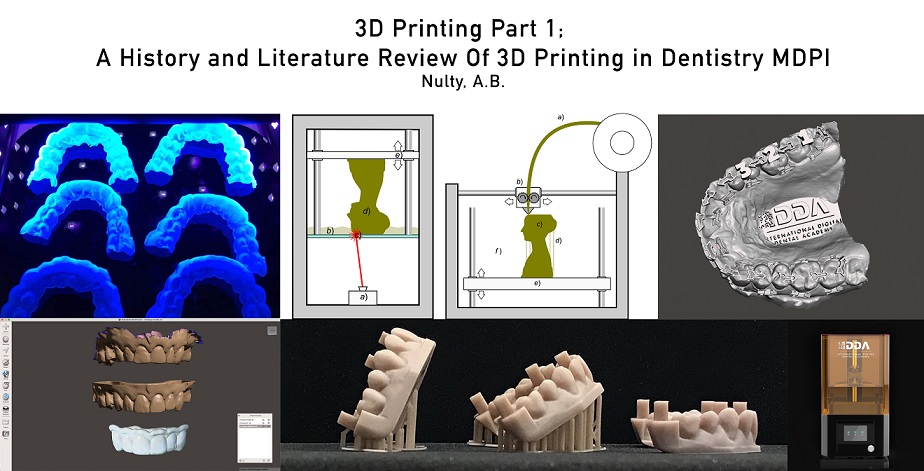Introduction: The term 3D printing is commonly used to depict an assembling method whereby the final form of an object is the result of the addition of different layers to build the frame of an object. This procedure is more accurately portrayed as additive manufacturing and is likewise alluded to as fast prototyping. The term 3D printing, in any case, is generally new and has been an active part of current developments in Dentistry. Much publicity encompasses the evolution of 3D printing, which is hailed as an innovation that will perpetually change CAM manufacturing, including in the dental sector. This review is the first part in a 3D Printing series that looks at the history of 3D Printing, the technologies available and reviews the literature relating to the accuracy of these technologies. Conclusions: The recent advancement in digital dentistry to incorporate these tools has modernised dental practices by paving the way for computer-aided design (CAD) technology and rapid prototyping. The use of 3D printing has led to 3D digital models produced with intraoral scanners (IOS), which can be manipulated easily for diagnosis, treatment planning, mockups, and a multitude of other uses. Combining 3D Printing with a 3D intraoral scan eliminates the need for physical storage but makes it to retrieve a 3D models for use within all dental modalities.

